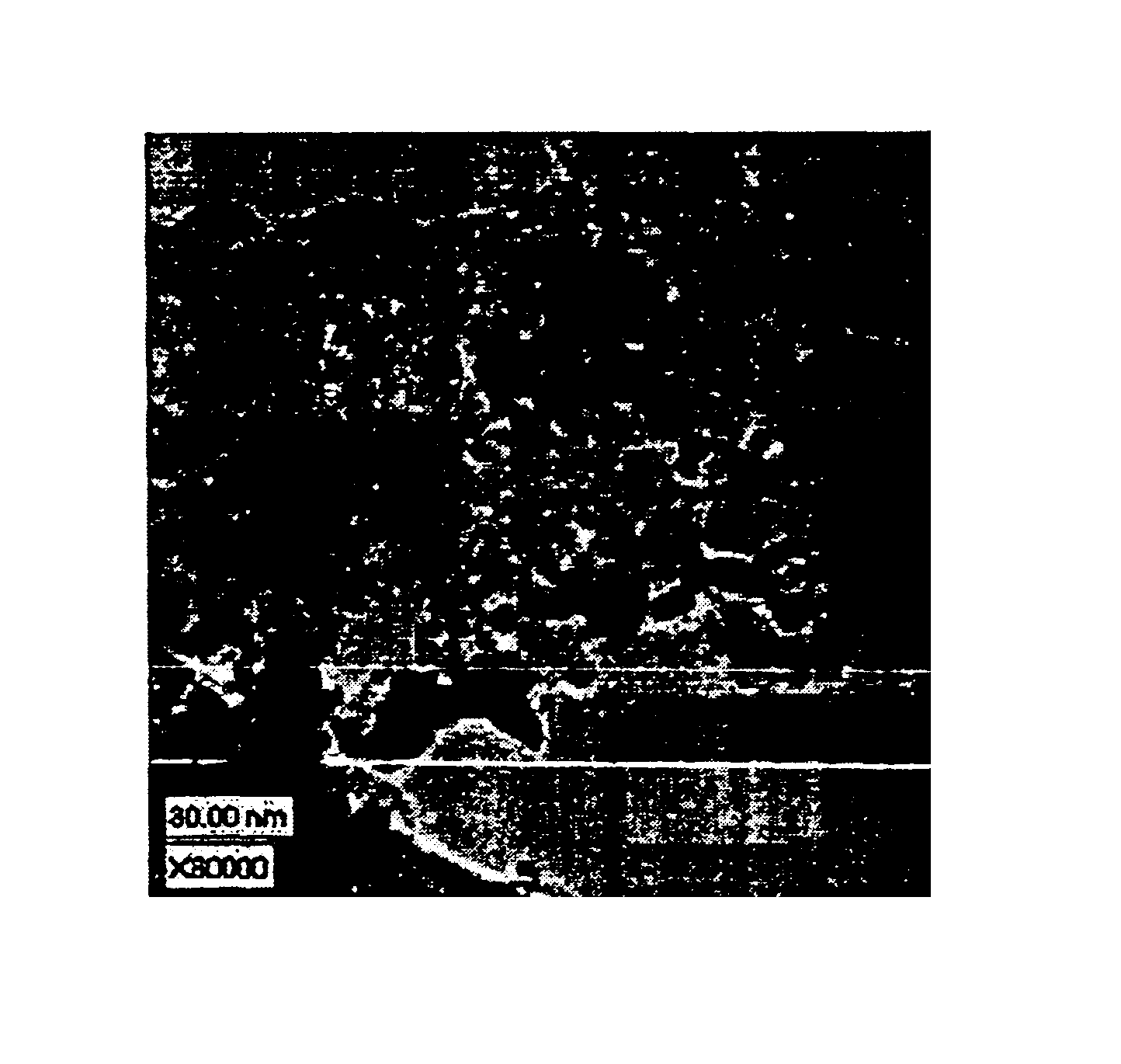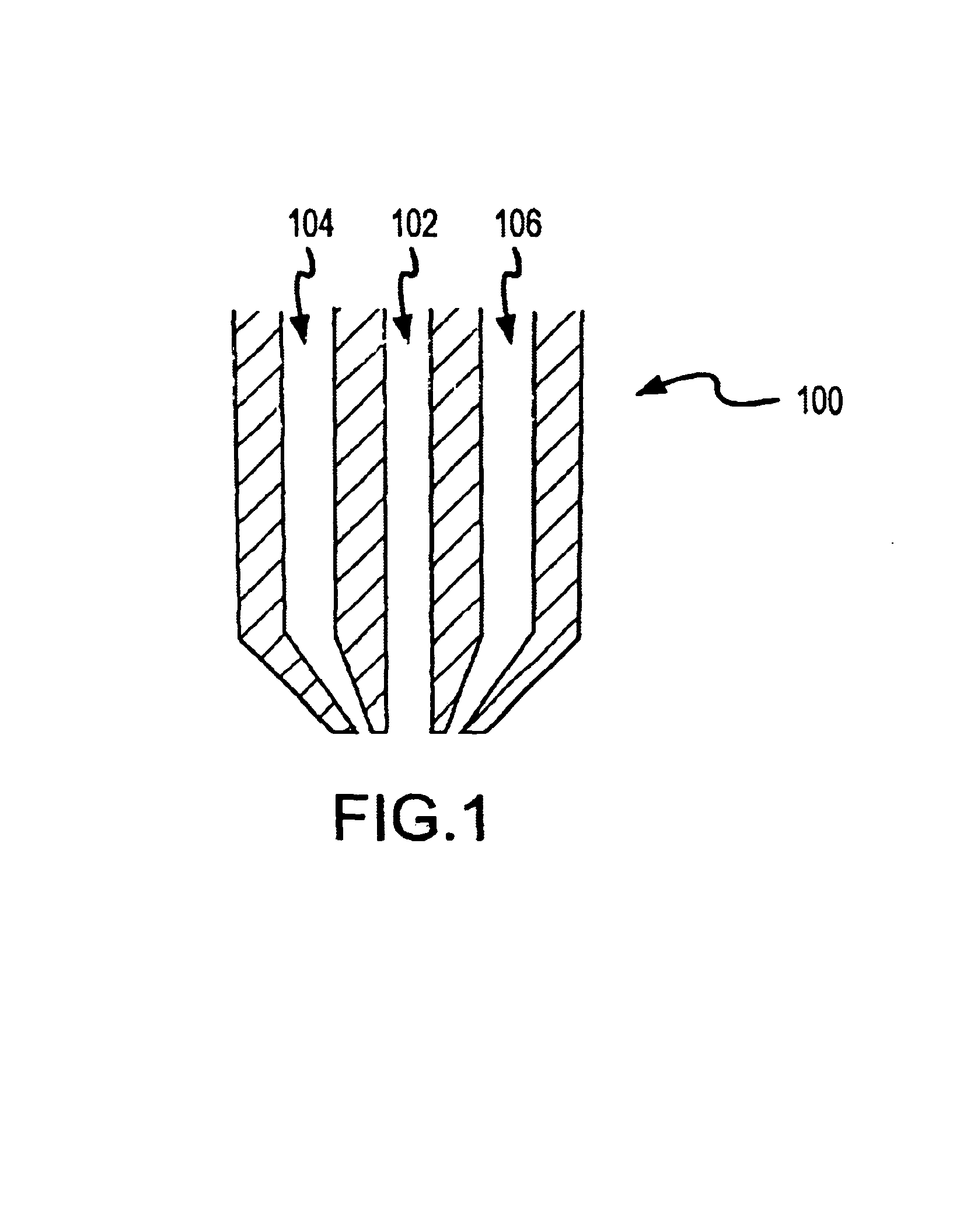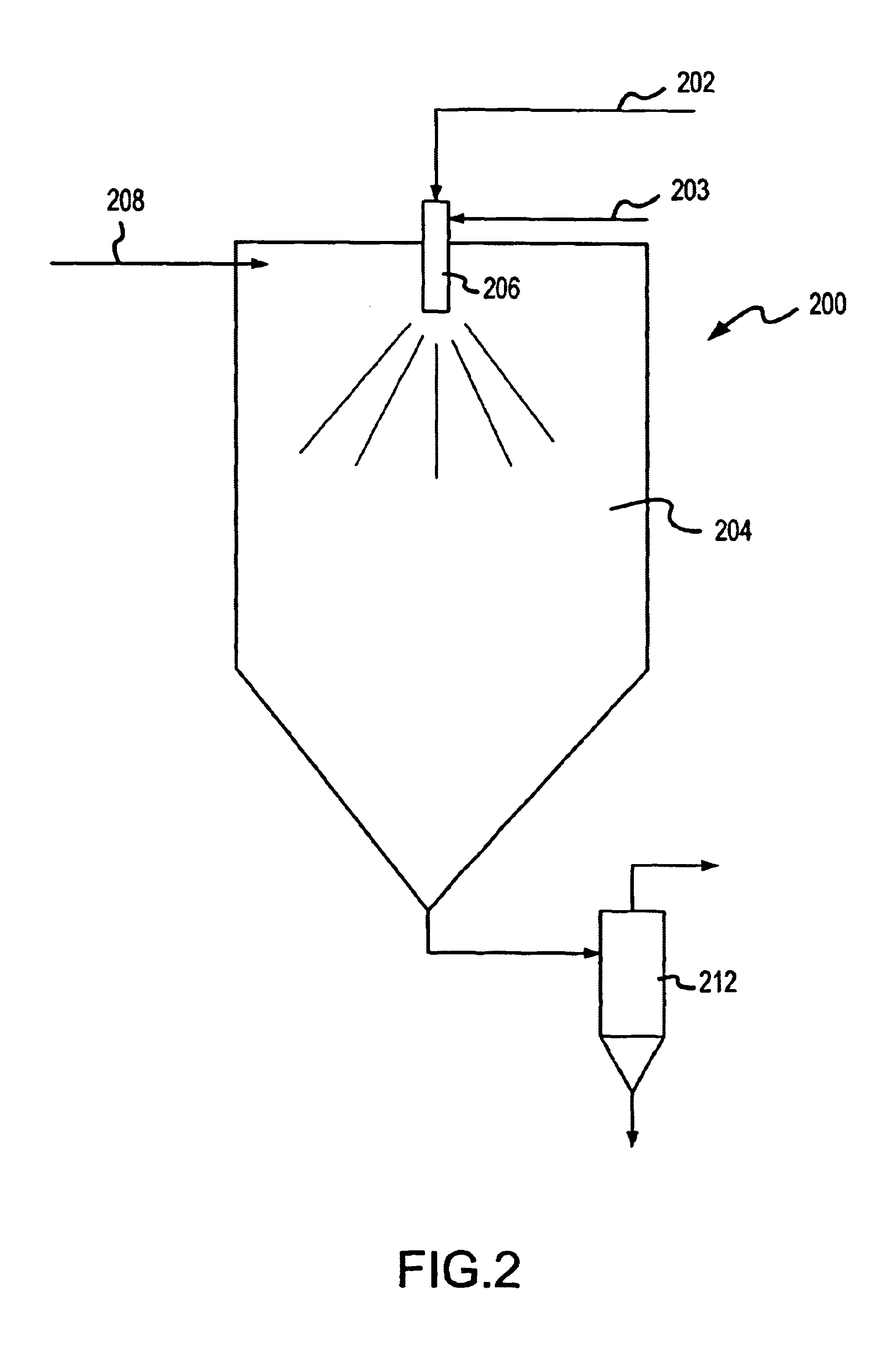Electrocatalyst powders, methods for producing powders and devices fabricated from same
a technology of electrocatalyst powder and powder, which is applied in the direction of metal/metal-oxide/metal-hydroxide catalyst, fixed capacitor, lithium compound, etc., can solve the problems of low power of zinc-air batteries, limited total power, and poor rechargeability/cycle li
- Summary
- Abstract
- Description
- Claims
- Application Information
AI Technical Summary
Benefits of technology
Problems solved by technology
Method used
Image
Examples
examples 41a through 41d
illustrate the influence of variable amounts of surfactant in the spray solution, variation in the weight percent of Mn as well as the spray conversion temperature as compared to Examples 30A and 30C. A comparison between Examples 30C and 41A leads to the conclusion that a higher conversion temperature is not necessarily beneficial for the catalyst morphology and performance. Both the MnO.sub.x dispersion and the electrocatalytic activity are lower for Example 41A, which was made at a higher conversion temperature with all other parameters being kept constant.
It appears that the lower the amount of added surfactant, the better the dispersity and electrocatalytic performance (compare Example 41A to Example 41B). Doubling the Mn concentration does not lead to any improvement in the electrocatalytic performance. In contrast, it is the lowest in the series of spray nozzle generated samples. This result indicates that the surface coverage at 10 weight percent Mn and about 25 m.sup.2 / g s...
example 44e
prepared with spray nozzle generation has identically high performance to the ultrasonically generated Example 23A. prepared at the lowest conversion temperature of 149.degree. C., with minimal addition of surfactant, 10 weight percent Mn and 5 weight percent solution concentration. Most likely these particular conditions (along with others such as residence time) ensure good kinetic conditions for the formation and distribution of the MnO.sub.x active species on the carbon support.
A higher surface area carbon support compared to the carbon support used for the previous spray conversion examples (surface area of 254 m.sup.2 / g) will provide higher support surface area available for the MnO.sub.x absorption. The surface area reduction after the spray conversion observed for the previous carbon support was on the order of about 10 times. Because of that reduction of the surface area, higher loading of MnO.sub.x was not beneficial for the electrocatalytic activity because of the lack o...
PUM
| Property | Measurement | Unit |
|---|---|---|
| cluster size | aaaaa | aaaaa |
| cluster size | aaaaa | aaaaa |
| cluster size | aaaaa | aaaaa |
Abstract
Description
Claims
Application Information
 Login to View More
Login to View More - R&D
- Intellectual Property
- Life Sciences
- Materials
- Tech Scout
- Unparalleled Data Quality
- Higher Quality Content
- 60% Fewer Hallucinations
Browse by: Latest US Patents, China's latest patents, Technical Efficacy Thesaurus, Application Domain, Technology Topic, Popular Technical Reports.
© 2025 PatSnap. All rights reserved.Legal|Privacy policy|Modern Slavery Act Transparency Statement|Sitemap|About US| Contact US: help@patsnap.com



